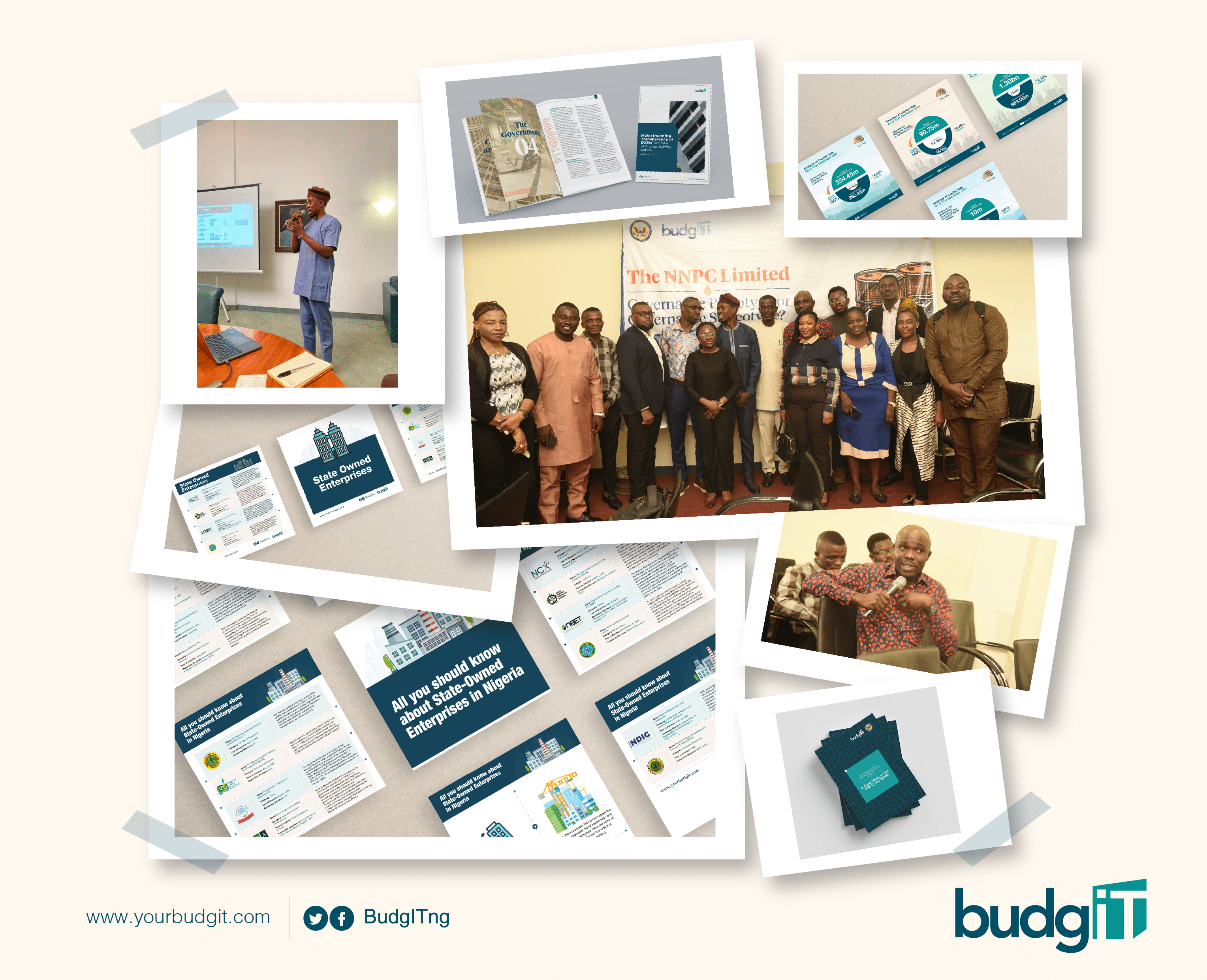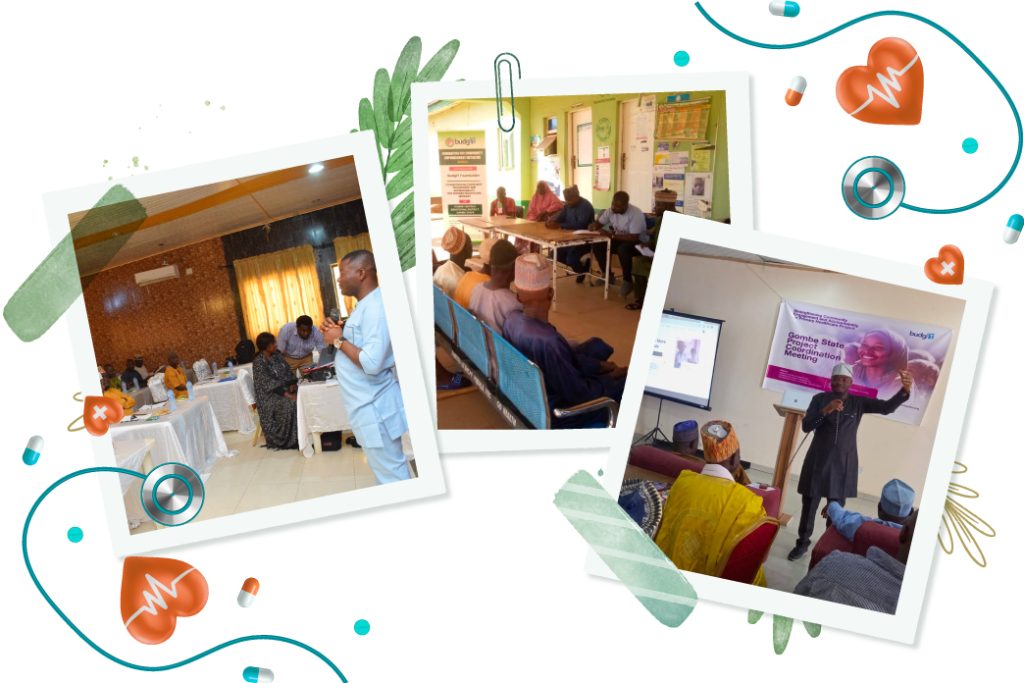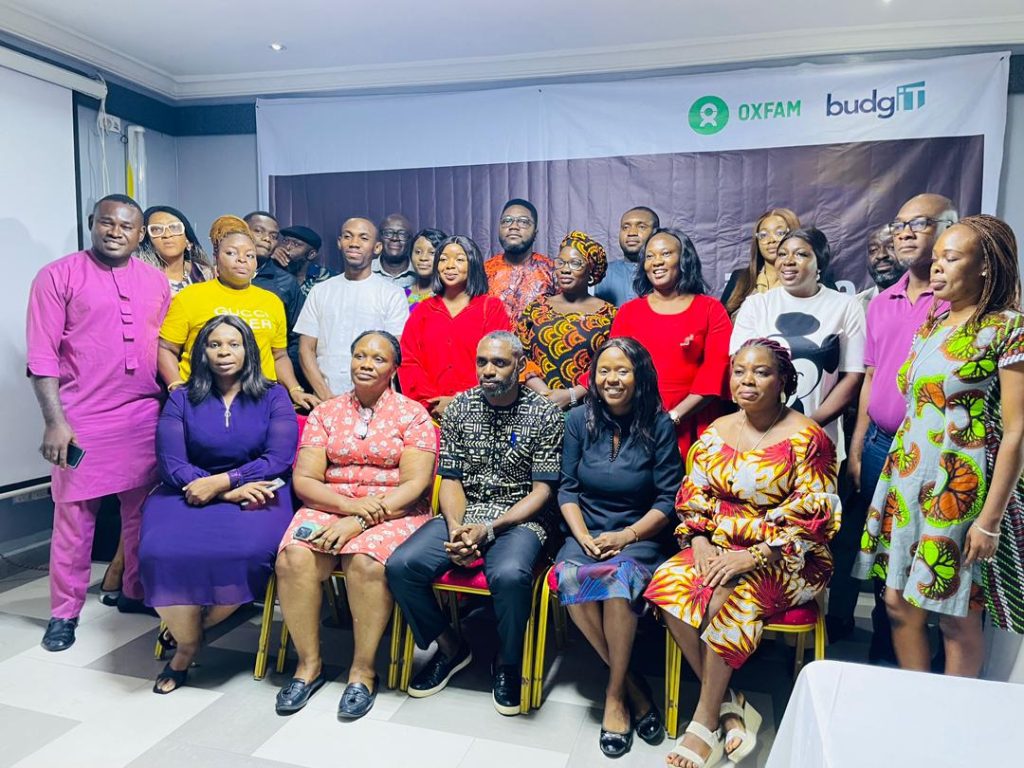Commencing in October of 2021, the purpose of the 12-month project was to: “Strengthen the fiscal transparency framework in Nigeria, leveraging the immense work of the Fiscal Transparency Reports team. Also to improve public participation of the budgets, advocating for increased transparency of state-owned enterprises, deepening the capacity of non-state actors, and partnering with the public sector team”.
BudgIT, an 11-year-old civic-tech Civil Society Organisation (CSO) focused on simplifying the Nigerian budget for citizens, was chosen as the implementing partner. BudgIT’s work on making Public Financial Management (PFM) more comprehensible by citizens has been done at national and subnational levels and provided actionable information for citizens, the media and development partners for effective government engagement. Through a special focus on PFM analysis (documentary, audiovisual, infographics and interactive internet media and applications), citizen engagement and purpose-built platforms (bringing together citizens and government), BudgIT has reached millions of Nigerians to encourage their participation in governance, better accountability and collective action for an improved democracy. In addition, BudgIT’s yearly appraisal of the national budget (in addition to its yearly assessment of the fiscal performance of the 36 states) has influenced investigation by the government, leading to the savings of billions of naira, among other things. Due to BudgIT’s activities and profile, it has developed a network of governmental and non-governmental collaborators that have enabled its work and agenda.
The goals of the project are that ‘Economic growth, trade, and investment are expanded’ and the objectives are strengthened by good governance and less protectionist, more trade-friendly Nigerian economic policy. The project’s overall objectives were to improve the level of fiscal transparency as well as citizens’ use of data of the federal government and state-owned enterprises in Nigeria. The project will also increase citizens’ awareness and participation in the budget process at the national level and raise interest in the accountability of State-owned Enterprises. The specific objectives (which were also activities) involved the following: Improve disclosure of State-owned Enterprises through rigorous policy analysis, engagement, and advocacy; Support Civil Society Organizations (CSOs) and media professionals’ network through capacity building on fiscal transparency; Strengthen government’s capacity for improved fiscal transparency; and Use media, interactive applications, and other creative tools to improve access and understanding of budget and resource audit reports.
Experience with Implementation of the Project and Lessons Learned
Divided into four quarters of three months each, BudgIT intended not only to translate the activities into outputs but to stimulate change in the extent of transparency and accountability in the Nigerian government. The lessons learned from their implementation are as follows:
A. 25 CSOs will be supported to facilitate budget understanding, a review of the fiscal transparency report, and a Co-created advocacy roadmap on state-owned enterprises’ transparency and need for budget realism. This activity was spread across three-quarters of the Project lifecycle and carried out once virtually and twice in person. BudgIT had a large turnout in the virtual and physical sessions, recording not less than 13 representatives of the invited CSOs and media organisations. The non-provision of logistic support may have been why attendance was not higher, as both physical meetings were in Abuja.
However, the participation, suggestions and roadmap made and produced by CSOs during the three sessions came from a place of understanding and engagement with the subject matter and their own experiences. But because of the project lifecycle and that a number of the term goals outlined in the roadmap document required regular and routine engagement and financial commitment (i.e., Engage with the National Assembly Finance Committee on the status of the Fiscal Responsibility Amendment Bill; Create a program around calling for pitches from notable Investigative Journalists or a Journalist ‘hackathon’ for campaigns around fiscal transparency; and provide capacity building for media agencies to enhance the handling of technical governance campaigns and advocacy, among others), this aspect of the project could have been improved upon. Be that as it may, the appropriate nodes (for intervention) were identified for grafting onto existing initiatives and similar programs that may come up in the future. BudgIT has learned that there is a high level of interest, capacity (and competence in the CSO community) and understood that there are high levels of attention and engagement with people, groups and institutions.
B. 20 media pieces (infographics and interactive applications) developed and distributed via digital platforms to support the objective of this project. This output—spread across two-quarters of the project cycle—was addressed through the promotion and dissemination of facts, figures and information on State-Owned Enterprises and government budgeting. Consisting of infographics, podcast sessions, videos and blog posts, these media formed a key thrust in reaching citizens that may not be aware of such governance issues by bringing it to platforms where they regularly participate. This interest comes with the implicit understanding that the information will nudge them to seek more information and engage in civic activity that impacts transparency and, perhaps, government accountability. BudgIT has learned that different methods would have to be used to improve citizens’ engagement and response levels.
C. Two memos and policy briefs will be developed and submitted to key federal government actors to advocate for improved disclosure of natural resources financials and state-owned enterprises. This output spread across two quarters of the project cycle, meaning that a total of 4 memos and policy briefs were produced. These policy briefs (i.e., 2022 Federal Government Budget Analysis Consultation Memo-Leveraging Budget Reforms for Economic Development; Fiscal Transparency in State-Owned Enterprises in Nigeria-A Case Study of the NNPC & NNLG; Transparency & the Problem of Poor Governance in State-Owned Enterprises; and Mainstreaming Transparency in State Owned Enterprises-The Role of Accountability Actors). The preceding memos were all drafted and shared on BudgIT’s media handles and given directly to government actors (i.e., the Budget Office of the Federation; the Fiscal Responsibility Commission; the Office of the Accountant General of the Federation; the Economic and Financial Crimes Commission; and the National Assembly Budget Research Office) and a State-Owned Enterprise. Their content ranged from an appraisal of the NNPC’s position as a foremost SOE and some successes and challenges they experienced to the importance that the many stakeholders can provide to improving transparency in government. However, (except for the Budget Office of the Federation), the sufficiency of sustained engagement with these actors in the content of the policy memos could certainly be improved upon. BudgIT has learned that these memos require sustained feedback from their recipients. We are happy to intensify the work beyond the project.
D. Quarterly Engagement with the Leadership of State-Owned Enterprises on the Need for Transparency and Efficiency. This output—spread through the entire four quarters of the project cycle—was initiated by the selection and delivery of letters to SOEs that BudgIT believed were crucial to the nation’s governance and revenue profile. The SOEs, taken from the Extractive sector, Defence, Energy, Credit, Commodities, Agriculture, Railways and ICT, among others, are as follows: Ajaokuta Steel Company Limited; Bank of Agriculture (BOA); Galaxy Backbone Plc.; Nigeria Bulk Electricity Trading Plc. (NBET); Nigeria Commodity Exchange (NCE); Nigerian Deposit Insurance Corporation (NDIC); Nigeria Electricity Liability Management Limited (NELMCO); Nigerian Liquified Natural Gas Corporation (NLNG); Nigerian National Petroleum Corporation (NNPC); Nigerian Mining Corporation; Nigerian Railway Corporation; Tafawa Balewa Square (TBS) Management Board; Transmission Company of Nigeria (TCN); and Zungeru Hydropower. All of these firms were contacted (a few representatives even responded to phone calls to their official numbers), and in some cases, letters were personally delivered, but only one formally responded (i.e., NELMCO). BudgIT has learned that to get responses from these SOEs, it would have to adopt methods that involve deliberate relationship building by looking for means to contact Senior Officials of these agencies directly. Also, to ensure that these methods of communication are sustained for long periods.
E. Engagement with the Budget Office of the Federation on Detailed Publication of SOE Budget and Closing Gaps in Fiscal Transparency/Budget Realism. This output, spread across two-quarters of the project cycle, was effected once in person and the second time virtually. The meetings were productive and revealing, in the sense that advocacy asks were tabled before the Budget Office, such as the non-inclusion of all SOE budgets in the national Appropriation Bill, the problem of the inclusion of new items in the Appropriation Bill during review by the National Assembly and the non-availability of the budgets of SOEs on public platforms for public engagement and scrutiny.
It was revealed by the Budget Office (during the first physical meeting) that due to the different funding forms for SOEs, some do not have any input from the Budget Office. This means that the budgets of these SOEs are prepared by the SOEs themselves and presented to the National Assembly as is. On the question of making information more transparent, BudgIT met with the Office of the Accountant General on the publishing of the fiscal and budgetary information and generally making it more publicly accessible. An existing platform with some information (an initiative of the Office of the Accountant General) is the Open Treasury Portal, containing information on the budget and utilisation of budgets. However, the data is disparate, irregular and oftentimes non-machine readable. BudgIT’s second meeting with the Budget Office of the Federation was also very revealing in many respects. Some of the findings that stood out were that the Budget Office is unable to compel the Ministries, Departments and Agencies (MDAs) to submit their budgets on time, and many of their initiatives (though majorly successful) would be improved substantially if they were codified or in the form of legislation. Fortunately, BudgIT has a cordial relationship with the Budget Office of the Federation but has learned that maintaining this relationship requires regular interactions with the officials of the Office.
F. Analyze, Simplify, and Distribute Available Financial Reports of SOEs to be Released during the Project Duration. The SOEs in question have been difficult to meet with, not to talk of getting them to provide information on reportage that can be used to engage with the public. The only SOEs that provided any form of actionable information were the NNPC and NELMCO. The former had released monthly production reports and a 2021 Audited Report, while the latter released information on budgetary allocations and utilisations. Both had been analysed, simplified and shared on BudgIT’s media handles in the form of infographics, posted messages and tweets. However, BudgIT has learned that it would have to adopt more engaging forms of simplification of technical information to make the latter more attractive and encourage citizens to be more interested.
Conclusion
BudgIT has had experience in the citizen’s engagement and advocacy space but has nonetheless learned lessons from implementing the above project. Namely, topics and issues that are technical at their core require a different approach in their presentation. That, where it needs to create relationships with government officials and institutions, it leverages existing networks but also does so knowing that such relationship building may take time. But more generally, BudgIT has learned that resources are indispensable to influencing the Nigerian governance space.
This learning note evaluates BudgIT’s experience with the implementation of the United States Consulate Lagos, Fiscal Transparency Innovation Fund for Improving Fiscal Transparency in Nigeria. The project was carried out between October 2021 and September 2022.



